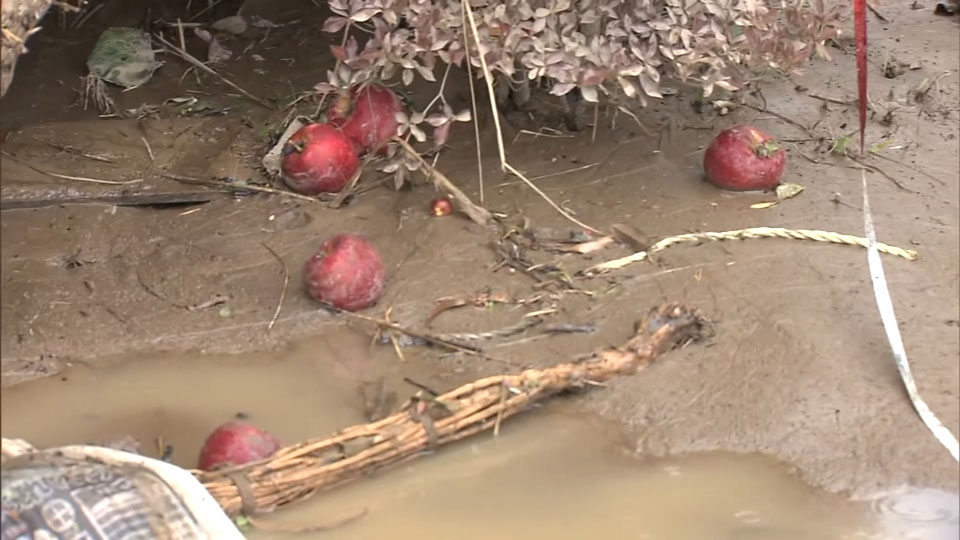Devastated lives
Residents are returning to their homes to assess the destruction and start cleaning up. However, hundreds have to return each night to evacuation centers or to stay with friends and family.

Shinju Maejima lives with his wife and son in a district near the Chikuma River. Before the typhoon struck, Maejima decided they would evacuate to his daughter's house nearby. When they returned home two days later, they found the first floor filled with mud and debris. The dining room, where the family used to gather, was still flooded with water, and the furniture was covered with mud. A line on the wall showed that the water had reached over a meter deep.

"I've never experienced something like this before," he says. "I don't have the slightest idea when we'll be able to return home."
Maejima's family has lived in the district for generations. He says that it is not easy to make a decision to leave and move elsewhere.
"There are so many memories we share with this land and community," he says. "I can't just let them all go. But at the same time, I worry if life can ever get back to normal if we stay here."
Key local industry

Nagano Prefecture is famous for its apples. The storm hit orchards along the river, causing flooding and shaking the fruit from the trees.
One farmer was cleaning out his warehouse, just waiting for the mud in his orchard to dry so he can remove the damaged apples. He said the typhoon has left the entire growing season in jeopardy.
Wide area flooded
After the Chikuma River burst its banks, the Geospatial Information Authority of Japan says the floodwaters stretched about 5 kilometers north to south, and were more than 4 meters deep in places.
More than 1,100 people who were stranded have been rescued and two deaths have been recorded in the area.

When the Chikuma River flooded in the past, the Ministry of Land and Infrastructure took measures to prevent a recurrence by reinforcing the levees and excavating the riverbed. But those steps turned out to be inadequate when Hagibis struck.
Now, government officials and experts are looking at the current status of the levees to determine what to do next.

